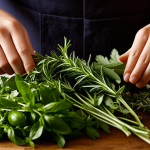Essential Ingredients and Tools for Cauliflower Cheese
Selecting the right cauliflower cheese ingredients is crucial for a perfect dish. Start with about 1 large head of cauliflower, cut into florets. The sauce calls for butter (roughly 50g), all-purpose flour (50g), and whole milk (600ml) to create a smooth béchamel base. For the best cheese for cauliflower cheese, a combination of mature cheddar (150g) and a touch of Parmesan (50g) balances sharpness and creaminess. Adding a tablespoon of Dijon mustard enhances flavor without overpowering. Heavy cream (100ml) can be stirred in to boost richness.
For kitchen tools for cauliflower dishes, a large saucepan for boiling cauliflower, a separate pot for the sauce, and a sturdy whisk are essential. A baking dish to assemble and bake the final dish should be ovenproof and roughly 20×20 cm in size. Using a fine grater for the cheese ensures even melting, while a colander to drain cauliflower prevents sogginess.
Also to see : How can you incorporate British herbs into everyday meals?
Substitutions include swapping cheddar for Gruyère or mozzarella if you prefer milder or stretchier cheese varieties. For dietary adjustments, plant-based cream alternatives and gluten-free flour can be used without sacrificing texture, allowing the dish to remain creamy and indulgent.
Step-by-Step Method for a Rich and Creamy Cauliflower Cheese
Mastering how to make cauliflower cheese begins with preparing the cauliflower properly. Start by boiling the florets in salted water until just tender, typically 8-10 minutes. Avoid overcooking to prevent sogginess. Drain well using a colander to reduce excess water that can thin your sauce.
Have you seen this : How can you replicate the flavors of a traditional Scotch egg?
The key to a luscious creamy cheese sauce lies in a smooth béchamel. Melt butter, stir in flour, and cook briefly to remove the raw taste. Gradually whisk in whole milk, ensuring no lumps form, until the sauce thickens. To this, add grated mature cheddar and Parmesan—the best cheese for cauliflower cheese—and a tablespoon of Dijon mustard for depth. Stir until the cheese melts fully, forming a rich, velvety sauce. Adding heavy cream now enhances creaminess without thinning.
Assemble by placing cauliflower in a buttered baking dish and pouring the cheese sauce evenly over. Bake at 180°C (350°F) for around 25-30 minutes until golden and bubbling. Use sturdy kitchen tools for cauliflower dishes like a fine grater and ovenproof dish to achieve optimal texture and presentation. This method balances flavors and textures perfectly, guaranteeing a satisfying dish every time.
Tips for Achieving Maximum Creaminess and Richness
Achieving a rich cauliflower cheese starts with the right cheese choices. The best cheese for cauliflower cheese combines mature cheddar’s sharpness and Parmesan’s nutty depth, providing a flavorful and creamy base. This blend melts evenly, avoiding graininess. Incorporating a small amount of Dijon mustard intensifies the sauce’s complexity without overwhelming it. For extra richness, stirring in heavy cream enhances the creamy cheese sauce without thinning it.
To prevent a watery or grainy sauce, temperature control is key. Cook the béchamel gently over medium heat, whisking constantly to avoid lumps and curdling. Gradually add cheese only once the sauce has thickened and slightly cooled; adding cheese to excessively hot sauce causes separation. Drain the cauliflower well after boiling to minimize excess water, which can dilute the sauce.
Tip: Using kitchen tools for cauliflower dishes such as a sturdy whisk ensures smooth sauce consistency. When melting cheese, finely grate it for even distribution and quicker melting. Additionally, seasoning with salt and freshly ground pepper at the end balances flavors and enhances creaminess. These expert steps transform a standard cauliflower cheese into a luscious, deeply satisfying dish.
Common Mistakes and Troubleshooting
A frequent challenge when preparing cauliflower cheese is dealing with a watery cauliflower cheese sauce. This usually occurs because excess water from poorly drained cauliflower dilutes the béchamel, thinning the creamy cheese sauce. To prevent this, drain the cauliflower thoroughly using a colander and allow it to steam dry briefly before assembling.
Overcooked or soggy cauliflower is another common issue. Boiling florets for too long breaks down their texture, resulting in mushiness. Aim to boil just until tender but still firm, typically 8-10 minutes, ensuring the dish maintains balance between soft cauliflower and thick sauce.
If you encounter a curdled or separated cheese sauce, it’s often due to adding cheese to a sauce that is too hot. Allow the béchamel to cool slightly before folding in grated cheese—the best cheese for cauliflower cheese melts smoothly when handled gently.
Adjust seasoning carefully after baking; sometimes salt or pepper may need a small boost to enhance the overall taste. Using appropriate kitchen tools for cauliflower dishes, like a whisk for smooth sauces and a colander for draining, greatly reduces common errors and ensures delightful results every time.
Essential Ingredients and Tools for Cauliflower Cheese
Choosing the right cauliflower cheese ingredients is vital for a flavorful, creamy dish. Key components include a large cauliflower head cut into florets, 50g butter, 50g all-purpose flour, and 600ml whole milk for a smooth béchamel sauce base. Incorporating 150g mature cheddar alongside 50g Parmesan offers the best cheese for cauliflower cheese, blending sharpness and depth. A tablespoon of Dijon mustard and 100ml heavy cream enrich the sauce further without thinning it.
For superior results, having the proper kitchen tools for cauliflower dishes is essential. Use a large saucepan to boil the cauliflower gently until just tender, avoiding sogginess. A sturdy whisk is critical for achieving a lump-free, smooth béchamel. A fine grater ensures cheese melts evenly, while an ovenproof baking dish sized around 20×20 cm supports even cooking and presentation. A colander helps drain cauliflower well to prevent watery sauce.
Adaptations allow substitutions like Gruyère or mozzarella for milder or stretchier textures. For dietary needs, gluten-free flour or plant-based cream alternatives maintain the creamy consistency, keeping the dish indulgent and accessible.





